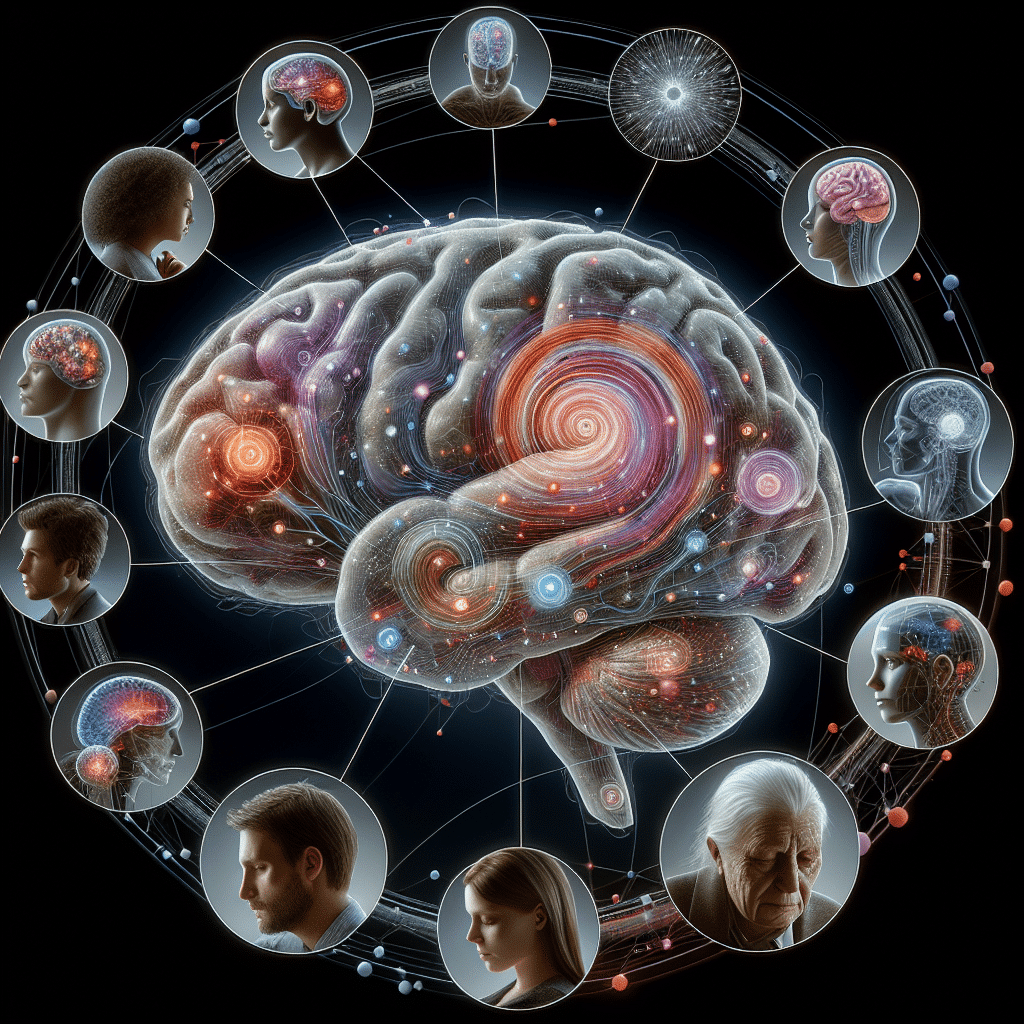
Problem-solving is a critical skill in both personal and professional settings, but it comes with its own set of challenges. Understanding the root of the problem is the first step in effectively solving it. By delving deep into the issue at hand, you can uncover the core reasons behind it and develop a clearer path towards resolution.
Identifying the Root of the Problem
When faced with a problem, it’s essential to take the time to thoroughly understand its underlying causes. This involves asking probing questions, gathering relevant information, and analyzing the data to pinpoint where the issue originated. By digging deep into the problem, you can avoid simply addressing the symptoms and instead focus on solving the root cause.
One common challenge in this stage is the tendency to jump to conclusions without fully understanding the complexity of the problem. It’s important to resist the urge to make assumptions and instead approach the situation with an open mind. This may involve conducting interviews, gathering feedback, or conducting research to gain a comprehensive understanding of the problem.
Another challenge is dealing with ambiguity and uncertainty. Some problems may not have a straightforward answer, and it can be daunting to navigate through uncertainty. In such cases, it’s crucial to embrace ambiguity and leverage creativity and critical thinking skills to explore various perspectives and potential solutions.
Lastly, biases and preconceived notions can also impede the process of understanding the root of the problem. It’s essential to remain objective and consider all angles without letting personal beliefs cloud judgment. This may require seeking input from others, challenging assumptions, and being open to alternative viewpoints.
By overcoming these challenges and taking the time to truly understand the root of the problem, you can set a strong foundation for effective problem-solving. This step lays the groundwork for the next stages of identifying potential solutions, evaluating alternatives, and ultimately implementing a successful resolution.
Identifying Potential Solutions
One of the key challenges in problem-solving is identifying potential solutions that can effectively address the root of the problem. This step requires creativity, critical thinking, and the ability to think outside the box. Here are some strategies to help you generate potential solutions:
- Brainstorming: Gather a diverse group of individuals with different perspectives and experiences to generate a wide range of ideas. Encourage participants to share their thoughts freely without judgment.
- Research: Conduct research to gather data and information that can help guide your decision-making process. Look for case studies, best practices, and expert opinions that are relevant to the problem at hand.
- Analogy: Consider similar problems that have been solved in the past and adapt their solutions to fit the current situation. Analogies can provide fresh insights and alternative approaches to solving the problem.
- Consultation: Seek input and advice from colleagues, mentors, or subject matter experts who can offer valuable insights and perspectives. External feedback can help you see the problem from different angles and come up with new ideas.
- SWOT Analysis: Evaluate the strengths, weaknesses, opportunities, and threats of each potential solution. This analytical tool can help you assess the viability and potential risks of each option before making a decision.
When identifying potential solutions, it is essential to consider the resources available, the timeline for implementation, and the desired outcomes. Prioritize solutions that are practical, feasible, and aligned with your goals and values. Remember that problem-solving is a dynamic process that may require multiple iterations and adjustments along the way. Stay open to new possibilities and be willing to adapt your approach as needed.
Identifying potential solutions
One of the key challenges in problem-solving is identifying potential solutions to address the root of the problem. This phase requires a creative and analytical approach to brainstorm different ideas and strategies that could potentially solve the issue at hand. However, it is important to note that not all solutions will be viable or effective, so it is essential to carefully evaluate each one.
There are several techniques that can be used to identify potential solutions, including brainstorming sessions, SWOT analysis, mind mapping, and conducting research. It is crucial to involve a diverse group of stakeholders in this process to gather different perspectives and insights that can help generate a range of possible solutions.
Evaluating pros and cons of each solution
Once a list of potential solutions has been generated, the next step is to evaluate the pros and cons of each option. This involves conducting a thorough analysis of the potential benefits and drawbacks of each solution to determine which one is most likely to be successful.
Some factors to consider when evaluating solutions include cost, feasibility, time constraints, potential risks, and impact on stakeholders. It is important to weigh these factors carefully and objectively to ensure that the chosen solution is the most appropriate and effective one.
It is also beneficial to involve stakeholders in the evaluation process to gather their input and perspectives on the potential solutions. This can help ensure that the final decision is well-informed and supported by those who will be affected by it.
Overall, the process of identifying potential solutions and evaluating their pros and cons is a critical step in the problem-solving process. By taking the time to carefully consider all options and gather input from key stakeholders, you can increase the likelihood of finding a successful solution to the problem at hand.

Implementing the chosen solution
Once a solution has been chosen from the potential options identified, the next step is to implement it. This process can present its own set of challenges that need to be addressed effectively for successful problem-solving.
Allocation of resources
One common challenge in implementing a solution is ensuring that the necessary resources, such as time, money, and manpower, are allocated appropriately. It is crucial to consider the availability of these resources and make adjustments as needed to avoid any delays or setbacks in the implementation process.
Communication and coordination
Effective communication and coordination among team members and stakeholders are essential for the successful implementation of a chosen solution. Clear communication helps in ensuring that everyone is on the same page and working towards the same goal, while coordination helps in syncing different aspects of the implementation process.
Monitoring and feedback
Monitoring the progress of the implementation and collecting feedback from those involved in the process can help in identifying any potential issues or roadblocks early on. This allows for timely adjustments to be made to ensure that the implementation stays on track and is successful in addressing the problem at hand.
Flexibility and adaptability
It’s important to remain flexible and adaptable throughout the implementation process, as unexpected challenges or changes may arise. Being prepared to make adjustments and pivot as needed can help in overcoming these obstacles and ensuring that the chosen solution is effectively implemented.
By addressing these challenges in implementing the chosen solution, individuals and teams can increase their chances of successfully solving problems and achieving their desired outcomes.
Reflecting on outcomes and adjustments
Reflection is an essential component in the problem-solving process. After implementing a solution, it is crucial to analyze the outcomes to determine if the problem has been adequately addressed. This step allows individuals or teams to assess the effectiveness of the chosen solution and identify any potential areas for improvement.
Reflection involves asking questions such as:
What were the results of the chosen solution?
Understanding the outcomes of the implemented solution is key to evaluating its success. Did it effectively address the root of the problem, or were there unintended consequences? By assessing the results, individuals can determine the impact of their actions and make informed decisions moving forward.
What could have been done differently?
Identifying areas for improvement is crucial in the problem-solving process. Reflecting on the chosen solution allows individuals to pinpoint any shortcomings or missed opportunities. This insight can help in making adjustments for future problem-solving scenarios.
How can the process be improved for future problem-solving?
Reflection is not only about evaluating the outcomes of a specific problem-solving instance but also about improving the process itself. By reflecting on the entire problem-solving journey, individuals or teams can identify strategies that were successful as well as areas that need refinement. This learning can be applied to future scenarios to enhance problem-solving abilities.
Adjustments based on reflection can involve refining problem-solving techniques, enhancing communication within a team, or incorporating feedback from stakeholders. By continuously reflecting on outcomes and making adjustments, individuals and teams can sharpen their problem-solving skills and become more effective in addressing challenges.

Summary:
Problem-solving involves a series of challenges that require a systematic approach to overcome. By understanding the root cause of the problem, individuals can identify potential solutions that address the underlying issues. Evaluating the pros and cons of each solution is crucial in making an informed decision on the best course of action to take.
Implementing the chosen solution requires careful planning and execution to ensure success. Reflecting on the outcomes of the implemented solution allows for adjustments to be made, leading to continuous improvement in problem-solving skills.






